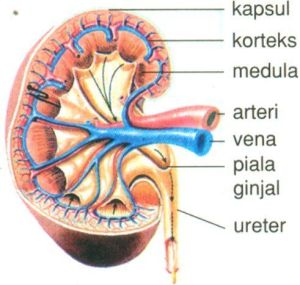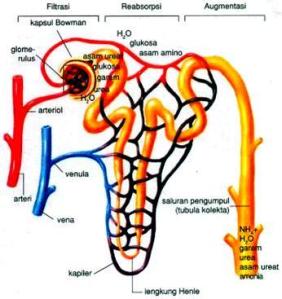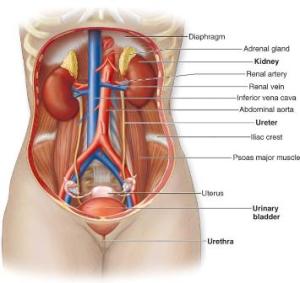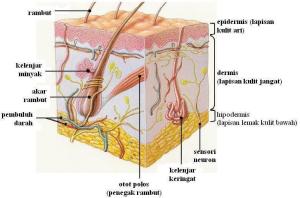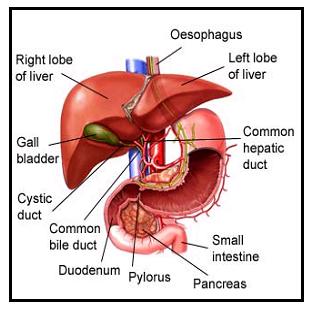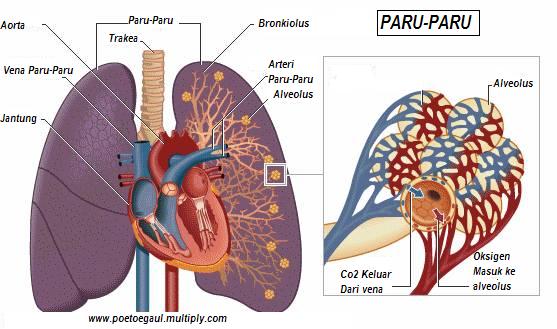
Canon 60D Rp. 3.500.000,- Info : 085 730 654 515
Canon 60D Rp. 3.500.000,-
Info Order melalui
Via telpon : 085 730 654 515
Spesifikasi lengkap canon 60D :
Model Type APS-C Digital SLR
Max. Image Resolution 18 Megapixel
Sensor CMOS 22.3 x 14.9mm
Image Processor Canon DIGIC 4
Dust Reduction System Yes
* Self Cleaning Sensor Unit
* Dust Delete Data appended to the captured image
* Manual cleaning of sensor
Still Image Size
* Large/Fine: Approx. 17.90 Megapixels (5184 x 3456)
* Medium/Fine: Approx. 8.00 Megapixels (3456 x 2304)
* Small 1/Normal: Approx. 4.50 Megapixels (2592 x 1728)
* Small 2/Fine: Approx. 2.50 Megapixels (1920 x 1280)
* Small 3/Fine: Approx. 0.35 Megapixels (720 x 480)
* RAW: Approx. 17.90 Megapixels (5184 x 3456)
* M-RAW: Approx. 10.10 Megapixels (3888 x 2592)
* S-RAW: Approx. 4.50 Megapixels (2592 x 1728)
Still Image Formats
* RAW
* JPEG
* RAW + JPEG
Movie Size and Recording
* 1920 x 1080 Full HD video at frame rates of 30 (29.97 fps), 24 (23.976 fps) and 25.0 frames per second,
* 1280 x 720 (50/60 fps)
* 640 x 480 (50/60 fps)
Movie Formats MOV
Lens Mount Canon EF mount
* Canon EF lenses (including EF-S lenses)
Auto Focus
* TTL-CT-SIR AF-dedicated CMOS sensor
* 9 (Cross-type, Center AF point with dual cross sensor for f/2.8)
* Automatic selection, manual selection
Auto Focus Modes
* Autofocus
* One-Shot AF
* Predictive AI Servo AF
* AI Focus AF
* Manual focusing (MF)
Metering System
* Evaluative metering (linkable to all AF points)
* Partial metering (approx. 6.5% of viewfinder at center)
* Spot metering (approx. 2.8% of viewfinder at center)
* Center-Weighted average metering
AE Lock and AE Bracketing
* Auto AE lock - In the One-Shot AF mode with evaluative metering, AE lock takes effect when focus is achieved.
* Manual AE lock - With AE lock button. (AE lock is updated each time you press the button.) Enabled in all metering modes.
Exposure Compensation
* Manual: ±5 stops in 1/3- or 1/2-stop increments
* AEB: ±3 stops in 1/3- or 1/2-stop increments
o * Indicated up to ±3 stops on the LCD panel and in the viewfinder.
ISO Sensitivity
* ISO 100 - 6400 (in 1/3-stop or whole-stop increments)
* ISO 12800 can be enabled with a Custom Function.
Shutter
* Vertical-travel, mechanical, focal-plane shutter with all speeds electronically-controlled 1/8000 to 1/60 sec., X-sync at 1/250 sec.
* 1/8000 to 30 sec., bulb
White Balance
* Auto
* Daylight
* Shade
* Cloudy
* Tungsten Light
* White Fluorescent Light
* Flash
* Custom
* Color Temperature setting
Viewfinder
* Eye-level pentaprism
* Coverage : Vertical/Horizontal approx. 96%
* Magnification : Approx. 0.95x (-1m-1 with 50mm lens at infinity) / 27.0° angle of view
* Eye Point : Approx. 22mm (At -1m-1 from eyepiece lens center)
* Dioptric Adjustment Correction : -3.0 to +1.0m-1 (diopter)
LCD Monitor
* 3.0" TFT color LCD
* Coverage Approx. 100%
* Viewing angle: Approx. 160°
Internal Flash Yes
* Auto pop-up, retractable, built-in flash in the pentaprism
* Guide Number : 43/13 (ISO 100, in feet/meters)
* Flash Exposure Compensation : Up to ±3 stops in 1/3- or 1/2-stop increments
* E-TTL II autoflash
External Flash Flash function settings, Flash C.Fn settings
Live View
* Live View shooting
* Remote Live View shooting (with a personal computer installed with EOS Utility)
* Live mode - One-point, contrast AF. Switching to another AF point possible.
* Face Detection Live mode - Face Detection, Contrast AF. Face selectable.
* Quick mode - Nine-point, phase-difference AF, same as normal shooting.
* Manual focus - Magnify the image by 5x or 10x and focus manually.
Storage SD, SDHC, SDXC card
Connectivity USB v.2.0
Power Source Battery Pack LP-E6
Dimensions (W x H x D) 144.5 x 105.8 x 78.6mm
Weight 675g (body only)
Warranty 1-year Limited Warranty by Authorized Distributor
KETENTUAN
* Pengiriman sepenuhnya oleh TIKI JNE sbg biro jasa pengiriman barang.
*Status pengiriman bs dicek lgsg di website dengan memasukkan no resi pengiriman.
*Brg bs sampai lebih cepat dgn "Paket Kilat" Tiki JNE (harga lebih mahal dr paket reguler).
Prosedur Transaksi Pemesanan Gadget :
1. Pembeli mentransfer Uang ke rek.bendahara kami melalui Bank MANDIRI,dan BCA ( Nomor Rekening silahkan di Minta ke kami Melalui Inbox/Sms ke 085730 654 515 )
2. Batas waktu transfer adalah : Jam 08.00 pagi - Jam 17.00 sore.Lewat jam tersebut akan masuk ke pengiriman besoknya.
3. Harap Segera Konfirmasi setelah transfer dan kirimkan alamat lengkap Anda via sms ke 085730 654 515
4. Barang dikirim via TIKI JNE ke alamat Pembeli ( Bila kota Anda ada Bandara maka dalam 1 hari barang akan sampai ditangan Anda,bila kota Anda tidak ada bandara maka maka akan memakan waktu 2 hari untuk sampai di tangan Anda)
5. Kami akan mengirim no resi ke pembeli sehingga Pembeli bisa melacak posisi perjalanan Gadget yang di pesan telah sampai mana dengan memasukkan nomor Resi yang telah kami Kirimkan
6. Setiap pengiriman Gadget melalui TIKI JNE kami Asuransikan.Jadi anda tidak perlu takut lagi barang tidak sampai/Hilang/Rusak di pengiriman.
Note : Anda tidak perlu khawatir/takut untuk Shopping Gadget ke kami karena kami murni DAGANG 100%
Klaim Garansi ke kita dengan Cara Barang tersebut silahkan dikirim Balik Ke kami VIA JNE dan Setelah Barang Tersebut Sampai akan kita cek dan Apabila Memang Ada Kerusakan sesuai yg di keluhkan maka Barang akan kami Kirimkan Barang yang Baru sebagai Pengganti nya
Info Order melalui
Via telpon : 085 730 654 515
Spesifikasi lengkap canon 60D :
Model Type APS-C Digital SLR
Max. Image Resolution 18 Megapixel
Sensor CMOS 22.3 x 14.9mm
Image Processor Canon DIGIC 4
Dust Reduction System Yes
* Self Cleaning Sensor Unit
* Dust Delete Data appended to the captured image
* Manual cleaning of sensor
Still Image Size
* Large/Fine: Approx. 17.90 Megapixels (5184 x 3456)
* Medium/Fine: Approx. 8.00 Megapixels (3456 x 2304)
* Small 1/Normal: Approx. 4.50 Megapixels (2592 x 1728)
* Small 2/Fine: Approx. 2.50 Megapixels (1920 x 1280)
* Small 3/Fine: Approx. 0.35 Megapixels (720 x 480)
* RAW: Approx. 17.90 Megapixels (5184 x 3456)
* M-RAW: Approx. 10.10 Megapixels (3888 x 2592)
* S-RAW: Approx. 4.50 Megapixels (2592 x 1728)
Still Image Formats
* RAW
* JPEG
* RAW + JPEG
Movie Size and Recording
* 1920 x 1080 Full HD video at frame rates of 30 (29.97 fps), 24 (23.976 fps) and 25.0 frames per second,
* 1280 x 720 (50/60 fps)
* 640 x 480 (50/60 fps)
Movie Formats MOV
Lens Mount Canon EF mount
* Canon EF lenses (including EF-S lenses)
Auto Focus
* TTL-CT-SIR AF-dedicated CMOS sensor
* 9 (Cross-type, Center AF point with dual cross sensor for f/2.8)
* Automatic selection, manual selection
Auto Focus Modes
* Autofocus
* One-Shot AF
* Predictive AI Servo AF
* AI Focus AF
* Manual focusing (MF)
Metering System
* Evaluative metering (linkable to all AF points)
* Partial metering (approx. 6.5% of viewfinder at center)
* Spot metering (approx. 2.8% of viewfinder at center)
* Center-Weighted average metering
AE Lock and AE Bracketing
* Auto AE lock - In the One-Shot AF mode with evaluative metering, AE lock takes effect when focus is achieved.
* Manual AE lock - With AE lock button. (AE lock is updated each time you press the button.) Enabled in all metering modes.
Exposure Compensation
* Manual: ±5 stops in 1/3- or 1/2-stop increments
* AEB: ±3 stops in 1/3- or 1/2-stop increments
o * Indicated up to ±3 stops on the LCD panel and in the viewfinder.
ISO Sensitivity
* ISO 100 - 6400 (in 1/3-stop or whole-stop increments)
* ISO 12800 can be enabled with a Custom Function.
Shutter
* Vertical-travel, mechanical, focal-plane shutter with all speeds electronically-controlled 1/8000 to 1/60 sec., X-sync at 1/250 sec.
* 1/8000 to 30 sec., bulb
White Balance
* Auto
* Daylight
* Shade
* Cloudy
* Tungsten Light
* White Fluorescent Light
* Flash
* Custom
* Color Temperature setting
Viewfinder
* Eye-level pentaprism
* Coverage : Vertical/Horizontal approx. 96%
* Magnification : Approx. 0.95x (-1m-1 with 50mm lens at infinity) / 27.0° angle of view
* Eye Point : Approx. 22mm (At -1m-1 from eyepiece lens center)
* Dioptric Adjustment Correction : -3.0 to +1.0m-1 (diopter)
LCD Monitor
* 3.0" TFT color LCD
* Coverage Approx. 100%
* Viewing angle: Approx. 160°
Internal Flash Yes
* Auto pop-up, retractable, built-in flash in the pentaprism
* Guide Number : 43/13 (ISO 100, in feet/meters)
* Flash Exposure Compensation : Up to ±3 stops in 1/3- or 1/2-stop increments
* E-TTL II autoflash
External Flash Flash function settings, Flash C.Fn settings
Live View
* Live View shooting
* Remote Live View shooting (with a personal computer installed with EOS Utility)
* Live mode - One-point, contrast AF. Switching to another AF point possible.
* Face Detection Live mode - Face Detection, Contrast AF. Face selectable.
* Quick mode - Nine-point, phase-difference AF, same as normal shooting.
* Manual focus - Magnify the image by 5x or 10x and focus manually.
Storage SD, SDHC, SDXC card
Connectivity USB v.2.0
Power Source Battery Pack LP-E6
Dimensions (W x H x D) 144.5 x 105.8 x 78.6mm
Weight 675g (body only)
Warranty 1-year Limited Warranty by Authorized Distributor
KETENTUAN
* Pengiriman sepenuhnya oleh TIKI JNE sbg biro jasa pengiriman barang.
*Status pengiriman bs dicek lgsg di website dengan memasukkan no resi pengiriman.
*Brg bs sampai lebih cepat dgn "Paket Kilat" Tiki JNE (harga lebih mahal dr paket reguler).
Prosedur Transaksi Pemesanan Gadget :
1. Pembeli mentransfer Uang ke rek.bendahara kami melalui Bank MANDIRI,dan BCA ( Nomor Rekening silahkan di Minta ke kami Melalui Inbox/Sms ke 085730 654 515 )
2. Batas waktu transfer adalah : Jam 08.00 pagi - Jam 17.00 sore.Lewat jam tersebut akan masuk ke pengiriman besoknya.
3. Harap Segera Konfirmasi setelah transfer dan kirimkan alamat lengkap Anda via sms ke 085730 654 515
4. Barang dikirim via TIKI JNE ke alamat Pembeli ( Bila kota Anda ada Bandara maka dalam 1 hari barang akan sampai ditangan Anda,bila kota Anda tidak ada bandara maka maka akan memakan waktu 2 hari untuk sampai di tangan Anda)
5. Kami akan mengirim no resi ke pembeli sehingga Pembeli bisa melacak posisi perjalanan Gadget yang di pesan telah sampai mana dengan memasukkan nomor Resi yang telah kami Kirimkan
6. Setiap pengiriman Gadget melalui TIKI JNE kami Asuransikan.Jadi anda tidak perlu takut lagi barang tidak sampai/Hilang/Rusak di pengiriman.
Note : Anda tidak perlu khawatir/takut untuk Shopping Gadget ke kami karena kami murni DAGANG 100%
Klaim Garansi ke kita dengan Cara Barang tersebut silahkan dikirim Balik Ke kami VIA JNE dan Setelah Barang Tersebut Sampai akan kita cek dan Apabila Memang Ada Kerusakan sesuai yg di keluhkan maka Barang akan kami Kirimkan Barang yang Baru sebagai Pengganti nya
















 Arrival in Arusha. You will be picked up by our driver from the airport, and transferred to the Arusha countryside, where you will overnight in comfort in preparation for your safari trip.
Arrival in Arusha. You will be picked up by our driver from the airport, and transferred to the Arusha countryside, where you will overnight in comfort in preparation for your safari trip. Staying at Rivertrees Country Inn – This elegant and welcoming country house offers delicious fresh food and warm hospitality in the Arusha countryside for you and your family. The surroundings are beautiful and green, and wandering in the expansive grounds spotting birds is simply lovely. Feel free to explore the wilderness on your holidays.
Staying at Rivertrees Country Inn – This elegant and welcoming country house offers delicious fresh food and warm hospitality in the Arusha countryside for you and your family. The surroundings are beautiful and green, and wandering in the expansive grounds spotting birds is simply lovely. Feel free to explore the wilderness on your holidays. An exciting afternoon game drive safari at Lake Manyara National Park – This park is home to many of Africa’s greatest animals, including Masai giraffe, elephant, crocodile, hippo and plains zebra. It is also home to over 400 species of bird, including the fish eagle, flamingo and tawny eagle.
An exciting afternoon game drive safari at Lake Manyara National Park – This park is home to many of Africa’s greatest animals, including Masai giraffe, elephant, crocodile, hippo and plains zebra. It is also home to over 400 species of bird, including the fish eagle, flamingo and tawny eagle. Staying at Kirurumu Tented Lodge– This is fabulous honeymoon lodging in luxury tents. The surroundings are equally fabulous, with the Ngorongoro Highlands rising behind the camp, and the rift valley floor at the front. Just the perfect safari holiday.
Staying at Kirurumu Tented Lodge– This is fabulous honeymoon lodging in luxury tents. The surroundings are equally fabulous, with the Ngorongoro Highlands rising behind the camp, and the rift valley floor at the front. Just the perfect safari holiday. Take a thrilling safari game drive towards the Serengeti – This world-famous national park is home to the African “Big Five” along with giraffe, zebra, wildebeest, monkeys, baboons, hippo and antelope. For those who visit at the right time of year, there is also the chance to see the Great Migration in full swing.
Take a thrilling safari game drive towards the Serengeti – This world-famous national park is home to the African “Big Five” along with giraffe, zebra, wildebeest, monkeys, baboons, hippo and antelope. For those who visit at the right time of year, there is also the chance to see the Great Migration in full swing. Staying at Mapito Tented Camp – A luxury tented camp tucked away in a clearing. Spend the evening sitting around the blazing campfire and listen to the sounds of the African night fill your ears.
Staying at Mapito Tented Camp – A luxury tented camp tucked away in a clearing. Spend the evening sitting around the blazing campfire and listen to the sounds of the African night fill your ears. Full day to explore the Serengeti, perhaps spotting animals you may not have spotted on your first game drives.
Full day to explore the Serengeti, perhaps spotting animals you may not have spotted on your first game drives. Take an exhilarating guided walk at the rim of the Ngorongoro Crater where, accompanied by a ranger or Masai guide, you will spot birds and monkeys in the verdant surrounds, and really feel you have experienced Tanzania on foot.
Take an exhilarating guided walk at the rim of the Ngorongoro Crater where, accompanied by a ranger or Masai guide, you will spot birds and monkeys in the verdant surrounds, and really feel you have experienced Tanzania on foot.  Take a thrilling full day game drive on the floor of the Ngorongoro Crater – A really special place where you can spot the famous African ‘Big Five’, which consists of cape buffo, elephant, black rhino, leopard and lion. A game drive on the crater floor, with its astounding concentration of wild animals, is simply unbeatable!
Take a thrilling full day game drive on the floor of the Ngorongoro Crater – A really special place where you can spot the famous African ‘Big Five’, which consists of cape buffo, elephant, black rhino, leopard and lion. A game drive on the crater floor, with its astounding concentration of wild animals, is simply unbeatable! Today you will head for the beaches of Zanzibar, Tanzania’s own Indian Ocean island paradise. You can simply relax and enjoy the sunshine on your honeymoon, and while away the days soaking in the laid-back atmosphere.
Today you will head for the beaches of Zanzibar, Tanzania’s own Indian Ocean island paradise. You can simply relax and enjoy the sunshine on your honeymoon, and while away the days soaking in the laid-back atmosphere. 











